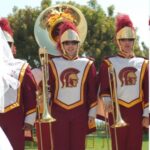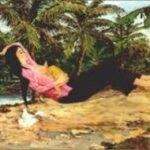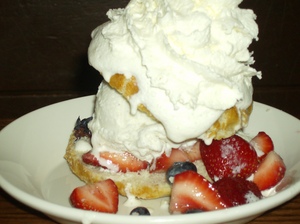For many years, mothers have rocked their babies to sleep singing lullabies. Mothers have played movement games and sang silly songs to entertain their toddlers. Babies would fall fast to sleep and the toddlers would laugh and giggle, and ask for “more.”
Music is “magical.” Music is an emotional release. It brings out the best in us – it makes us feel good inside.
The value of music is important to young children. Music allows children to use their imaginations and creativity. In many schools, children are singing, clapping, chanting, marching, skipping and simple dancing. They are involved in all kinds of music and movement activities. Children learn so much through music. When children participate in music and movement, many areas of the brain are activated. Music and movement are important ways for young children to demonstrate their intelligence. Music impacts young children’s development: knowledge, skills, attitudes and values.
Children naturally connect music with body movement. With the flow of the music, children move their bodies and express their thoughts and feelings through dance. They learn that dance begins with the awareness of the movement of their body and their potential for creativity, and as they become aware of their body and explore movement, they begin to recognize and appreciate themselves and others.
There are many ways to promote music and movement throughout the classroom setting. The most important thing to remember is that the teacher needs to be a role model and be enthusiastic about music and movement. Every child’s ability for music and movement should be maximized. Children will practice and learn appropriate behaviors. They will learn how handle and place the materials where they belong when they are finished with their activities.
Ideas for a music and movement activities throughout the classroom:
Set up an area for musical instruments, a radio, CD player with a variety of music CDs, streamers and scarves for dancing. Children should have some free time to explore this areas and create their own songs, music or movement (or with their friends). You can add a tape recorder with blank tapes, so that the children can record their songs.
During group time, the teacher can teach the children some chants, rhymes and raps or do a story song with the group.
Use songs and movement games during transitions.
Science experiment. Have two plants on hand. Let the children play classical music for one plant. Place the second plant in another area away from the music. Then in about a week of two, check out the plant that heard the music. (The plant that heard the music should be healthier and bigger than the one that had no music played.)
Encourage the children make up a rap about school, a best friend, or their favorite thing they like to do. Let each child present their rap in front of the group.
The children can do a Fairy-Tale Opera. They can perform “The Three Bears,” “Little Red Riding Hood,” “The Three Little Pigs.” They can even do a dance movement. The children may even want to make props and costumes and perform it in front of the group. Older children can take their favorite book that they read, and write their own story book opera or musical.
Water Glass Concert. Line up 8 glasses. Add water to each glass to make a scale. (When you hit the glass with a metal spoon, each glass should make a different tone. – low to medium to high notes. Glasses should be fill from a little to almost full to get the tones they need.) The children can practice and come up with a simple song to play, “Twinkle, Twinkle Little Star,” “Mary Had a Little Lamb,” “ABC’s.”
Homemade Musical Toys/Instruments:
Tissue Box Guitars. String rubber bands across the ready made hole in the box.
Shakers, Maracas: Coffee Can Shakers. Take an empty metal can with a lid and a handful of dried rice, beans or popcorn seeds. Put them in the can, cover tightly and shake, shake, shake.
Paper Bag Maracas: Let the children decorate white paper bags with bright colors. Add a handful of dried beans. Tie the bag with yarn. Now shake, shake, shake.
Kazoos or Tubing Horns: Toilet paper tubes are best for kazoos. Paper towel or gift wrap tubes are great for the Tubing Horns. Let the children paint the tubes and decorate them. They can sing into them or make noises.
Dancing Bells: Thread some large and small bell through some elastic. The children can tie the bells around their ankles and shake them when they dance.
Nature’s Music. Take the children sit outdoors and listen to the sounds of nature – birds singing, trees whistling in the wind. On a rainy day, the children can sit in the classroom and listen to the pitter patter of the rain. Have a tape recorder available in case they want to record the sounds.
Lip Synching: Let the children choose a song to play on a CD or tape and let them lip synch in front of the group.
Take the children on a field trip to a children’s concert. Talk with the group about the type of music they will be hearing, how they are to dress for the concert and the type of instruments that they will be listening to.
Let the children paint to different types of music.
Have a day where you introduce a composer. Get a book from the library about the composer’s life, get a piece of their music to play for the children, and see how the composer life’s affected the music they created.
Invite a musician to come in and play or a dancer to to dance in front for your group.
Turn your dramatic play area into a Mexican restaurant and play some Mexican music. Have a menu, food and let the children make and wear simple costumes. They can dance the Mexican Hat dance and shake their paper bag maracas.
Play some jazz. Talk about New Orleans and where jazz came from.
Host a Multicultural Music party. Invite the parents for refreshments from around the world or have the parents provide a pot luck dish from their country. Let the children learn dances and songs beforehand, from other countries and perform them for their parents.
Remember that “Music is Magical.”




